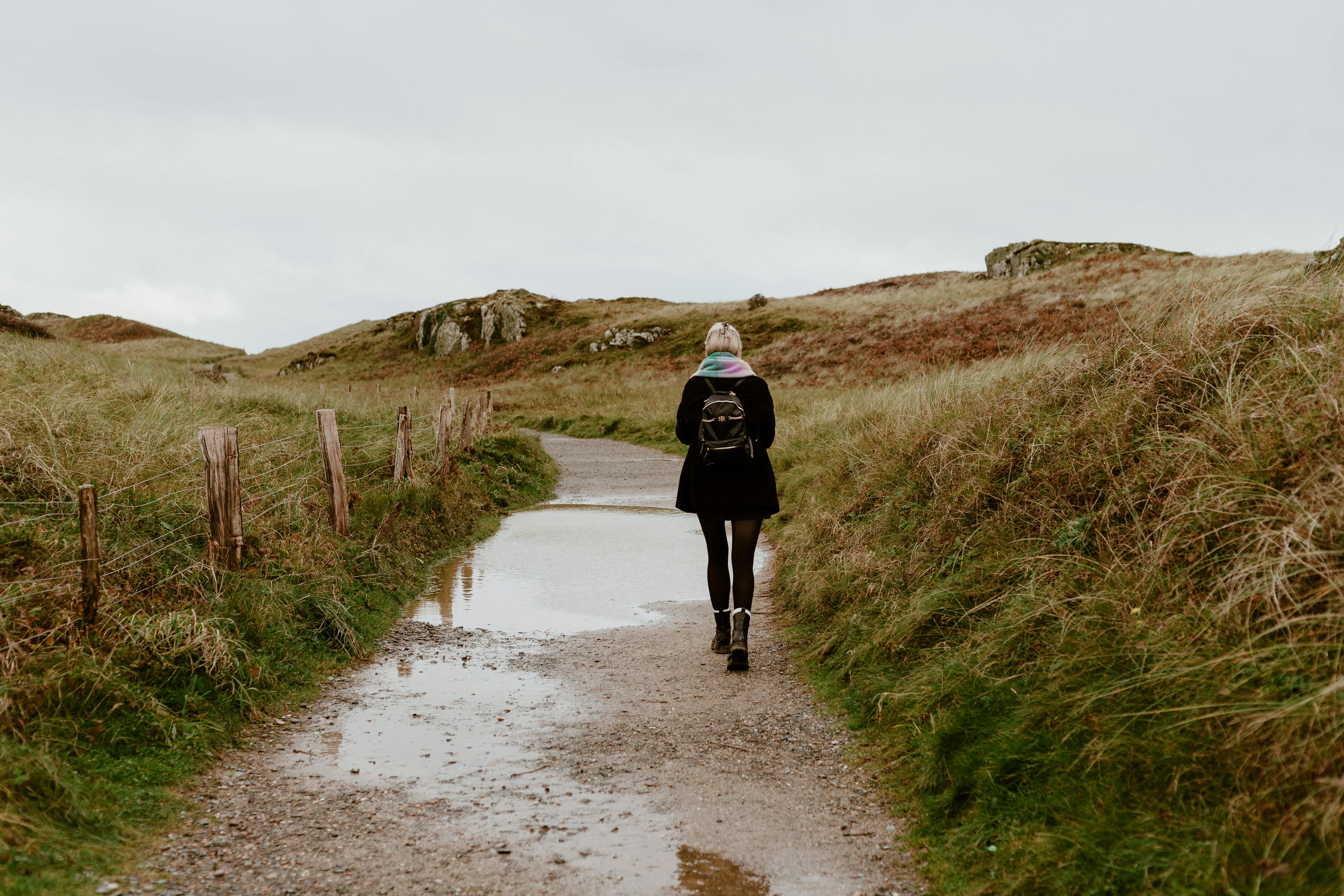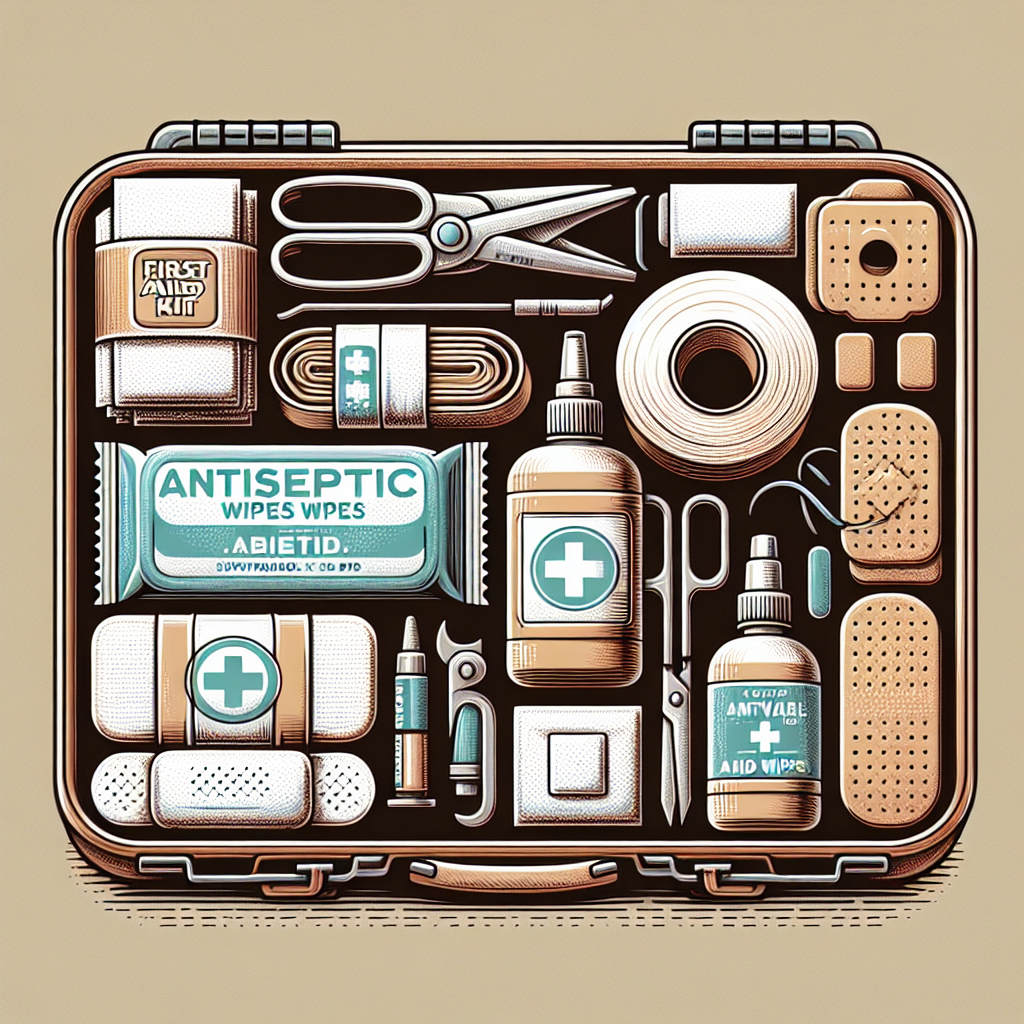Picture this: you’re out on a bike ride, feeling the wind in your hair and the freedom of the open road. But suddenly, disaster strikes – you crash your bike and find yourself injured and in need of immediate medical attention. In moments like these, having a first aid kit in your bike survival kit can be a lifesaver. Whether it’s a small cut or a more serious injury, a first aid kit is a crucial tool to have in your arsenal. In this article, we’ll explore the reasons why having a first aid kit is an absolute must for all bike enthusiasts. So grab your helmet and let’s get started!
Importance of a First Aid Kit
When it comes to riding your bike, safety should always be a top priority. Accidents and injuries can happen at any time, and having a first aid kit on hand can make all the difference in ensuring immediate medical attention. A bike first aid kit is specifically designed to provide you with the necessary supplies to deal with minor injuries and manage major ones until help arrives. By being prepared and having a well-stocked first aid kit, you can stay calm and confident knowing that you are equipped to handle any situation that may arise on your biking adventures.
Ensuring Immediate Medical Attention
The first and most important reason to have a first aid kit in your bike survival kit is to ensure immediate medical attention. In the event of an accident or injury, time is of the essence, and having a well-equipped first aid kit allows you to quickly and effectively administer first aid before professional help arrives. From cleaning and dressing wounds to applying pressure to control bleeding, the contents of your first aid kit can make a significant impact on the outcome of an injury. By having the necessary supplies readily available, you can take immediate action to prevent further harm and provide the care needed to stabilize the injured person until medical professionals can take over.

Dealing with Minor Injuries
Not all bike-related injuries are major emergencies, but even minor injuries can benefit from immediate first aid. Cuts, scrapes, and abrasions are common occurrences in biking, and having a first aid kit with adhesive bandages, antiseptic wipes, and sterile gauze pads allows you to quickly clean and protect the wound to prevent infection. Additionally, having medical tape, tweezers, and scissors in your kit can help you properly secure and trim dressings, ensuring that they stay in place and provide the necessary protection for the injury. Remember, even minor injuries should not be ignored, and having a first aid kit allows you to take swift action to promote healing and prevent complications.
Managing Major Injuries Until Help Arrives
While it is always recommended to seek professional medical help for major injuries, such as fractures or head trauma, the time it takes for emergency services to arrive can be critical. In these situations, having a well-stocked first aid kit can mean the difference between life and death. Severe bleeding control is a crucial skill, and your first aid kit should include items like hemostatic agents and tourniquets to quickly stop bleeding and stabilize the injured person. Splinting and immobilization supplies are also essential to prevent further damage in the case of fractures or sprains. Additionally, knowing how to perform cardiopulmonary resuscitation (CPR) can be vital in reviving someone who has experienced cardiac arrest. By having the necessary tools and knowledge in your first aid kit, you can effectively manage major injuries and potentially save lives while waiting for professional medical help.

Essential Contents of a Bike First Aid Kit
Now that we understand the importance of having a first aid kit in your bike survival kit, let’s take a closer look at the essential contents that should be included:
Adhesive Bandages
Adhesive bandages, also known as Band-Aids, are essential for covering small cuts, scrapes, and blisters. They protect the wound from further contamination and promote healing.
Antiseptic Wipes
Antiseptic wipes are used to clean wounds before applying bandages. They help remove dirt and bacteria, reducing the risk of infection.
Sterile Gauze Pads
Sterile gauze pads are used for covering larger wounds or applying pressure to control bleeding. They are highly absorbent and provide a clean surface for wound care.
Medical Tape
Medical tape is used to secure dressings or gauze pads in place. It allows for flexibility and ensures that dressings stay in position.
Tweezers and Scissors
Tweezers and scissors are essential tools for removing splinters, cutting tape or dressings, or trimming gauze pads to the desired size.
Disposable Gloves
Disposable gloves should always be included in your first aid kit to protect both the victim and the responder from potential infection or contamination.
Pain Relievers
Pain relievers, such as acetaminophen or ibuprofen, can provide temporary relief from pain and discomfort caused by minor injuries or muscle soreness.
Antihistamines
Antihistamines help alleviate symptoms of allergic reactions, such as itching, redness, or swelling caused by insect bites or other allergens.
Emergency Blanket
An emergency blanket, also known as a space blanket, is a lightweight, compact, and reflective blanket that helps retain body heat and protect against hypothermia in emergency situations.
Instant Cold Packs
Instant cold packs are used to reduce swelling and inflammation caused by minor injuries. They provide immediate cooling relief when activated.
Ensuring that your bike first aid kit is well-stocked with these essential items will enable you to respond effectively to a wide range of bike-related injuries and emergencies.
Immediate First Aid for Common Bike Injuries
Now that you have your bike first aid kit ready, let’s take a look at some common bike injuries and the immediate first aid steps you can take:
Cuts and Scrapes
Cuts and scrapes are among the most common bike injuries. If you or someone you’re biking with sustains a cut or scrape, start by cleaning the wound with antiseptic wipes from your first aid kit. Apply pressure with a sterile gauze pad to control any bleeding, and then cover the wound with an adhesive bandage to protect it from dirt and bacteria. Remember to change the dressing regularly and monitor for signs of infection.
Burns and Sunburns
Biking under the sun for extended periods can sometimes lead to sunburns. In the case of mild sunburns, seek shade and cool the affected area with cold water or a damp towel. You can apply aloe vera gel or a soothing burn ointment from your first aid kit to alleviate discomfort. For more severe burns, such as contact burns from the bike or road, cool the burn under running water for at least ten minutes and cover it with a sterile non-stick dressing.
Fractures and Sprains
In the event of a fracture or sprain, it’s crucial to immobilize the injured area to prevent further damage. Apply a splint using materials from your first aid kit, such as rigid cardboard or a SAM splint, to support the injured limb. Use elastic bandages or triangle bandages to secure the splint in place. Remember to elevate the injured limb and apply ice or a cold pack to reduce swelling.
Heat Exhaustion and Dehydration
Biking in hot weather can sometimes lead to heat exhaustion and dehydration. If you or someone you’re biking with shows signs of heat exhaustion, such as excessive sweating, dizziness, or nausea, move to a shaded area and drink cool fluids. Loosen tight clothing and apply a cool compress to the back of the neck. To prevent dehydration, drink fluids regularly and consider adding electrolyte tablets or powder to your water bottle from your first aid kit.
Insect Bites and Allergic Reactions
Insect bites are an unfortunate part of outdoor activities, including biking. If you or someone you’re biking with gets bitten by an insect, start by washing the area with soap and water. Apply an antihistamine cream or take an antihistamine tablet from your first aid kit to reduce itching and swelling. If there are signs of an allergic reaction, such as difficulty breathing or anaphylaxis, seek immediate medical help and administer any prescribed medication, such as an epinephrine auto-injector, if available.
By knowing how to respond to these common bike injuries and having the necessary supplies in your first aid kit, you can provide immediate care and comfort until professional medical help arrives if needed.

Handling Major Injuries with a Bike First Aid Kit
While minor injuries can often be managed effectively with a well-stocked first aid kit, major injuries require extra care and attention. Nevertheless, having a bike first aid kit can still play a vital role in providing immediate assistance until professional help arrives. Here are some ways you can handle major injuries with your first aid kit:
Severe Bleeding Control
Severe bleeding can occur from deep cuts, lacerations, or puncture wounds during a bike accident. To control severe bleeding, apply direct pressure to the wound using a sterile gauze pad or a clean cloth from your first aid kit. If the bleeding does not stop, apply additional pressure or elevate the injured limb above the heart if possible. If bleeding persists, consider using a tourniquet as a last resort to restrict blood flow until professional medical help can be obtained.
Splinting and Immobilization
Fractures and sprains require prompt immobilization to prevent further injury before medical professionals can provide appropriate care. With the materials from your first aid kit, you can create a makeshift splint using rigid cardboard or a SAM splint. Carefully position the injured limb in its current alignment, providing support along the length of the bone or joint with the splint. Secure the splint in place with elastic or triangle bandages from your first aid kit, making sure it is firm but not too tight. While splinting can help stabilize the injury, remember that only medical professionals can properly diagnose and treat fractures or sprains.
Cardiopulmonary Resuscitation (CPR)
Cardiac arrest can occur in severe bike accidents, and knowing how to perform cardiopulmonary resuscitation (CPR) can make a significant difference in saving a life. If you come across someone who is unresponsive and not breathing, check for a pulse and begin CPR immediately if there is no pulse. CPR involves chest compressions and rescue breaths and should be performed with the proper technique and rhythm. Chest compression alone, in the absence of rescue breaths, can also be administered if you are not trained in CPR. Attending a first aid certification course can provide you with the necessary knowledge and skills to perform effective CPR.
Eye Injuries
Eye injuries can occur from debris, dust, or impact during a bike ride, and they require careful and immediate attention. If a foreign object is lodged in the eye, do not attempt to remove it. Instead, encourage the injured person to blink and produce tears naturally, which could help flush out the object. If there is irritation or redness, gently rinse the eye with saline solution or clean water from a sterile eyewash bottle in your first aid kit. If the injury is more severe, cover the eye with a clean, sterile dressing or bandage and seek immediate medical attention.
Head Injuries and Concussions
Head injuries can range from minor bumps and bruises to severe traumatic brain injuries. If you or someone you’re biking with experiences a head injury, the first and most crucial step is to assess the severity. If the injured person loses consciousness, experiences seizures, or shows signs of a severe head injury, call emergency medical services immediately. While waiting for professional help, ensure that the injured person remains still and avoid removing any helmets or headgear unless absolutely necessary. Apply a cold pack wrapped in a cloth to the affected area to reduce swelling, but do not apply direct pressure.
Remember, handling major injuries requires proper training and prompt medical attention. While your first aid kit can provide initial care, it is essential to seek professional help as soon as possible.
Choosing the Right First Aid Kit for Your Bike Survival Kit
When selecting a first aid kit for your bike survival kit, there are several factors to consider to ensure that it meets your needs effectively. Here are some key considerations to keep in mind:
Considerations for Size and Portability
Your first aid kit should be compact and lightweight, making it easy to carry with you on your biking adventures. Look for a kit that can fit in your bike bag or attach to your bike frame without adding excessive bulk or weight.
Checking for FDA Approval and Expiry Dates
Ensure that the first aid kit you choose has been approved by the Food and Drug Administration (FDA) or another reputable regulatory body. Additionally, regularly check the expiry dates of medications and other perishable items in the kit and replace them when necessary.
Assessing the Contents and Versatility
Review the contents of the first aid kit to ensure that it includes the essential items we have discussed earlier. Additionally, consider any specific needs you might have, such as medications for pre-existing conditions or additional items for specific activities, such as biking in remote areas.
Waterproof and Durable Packaging
Biking often involves exposure to the elements. Therefore, it is essential to choose a first aid kit with waterproof and durable packaging to protect the contents from moisture, dust, and other environmental factors. Look for kits made of waterproof material or those that come with a waterproof case or bag.
Additional Features and Accessories
Some first aid kits come with additional features and accessories that can be useful for bike-related emergencies. These may include emergency whistles, reflective strips, or space for personal information and emergency contact details. Consider these additional features when choosing a first aid kit that best suits your needs.
By considering these factors when selecting a first aid kit, you can ensure that you have a kit that is practical, reliable, and tailored to your biking adventures.
Training and Education for Proper First Aid Response
Having a well-stocked first aid kit is essential, but it is equally important to have the knowledge and skills to use it effectively. Investing in proper training and education in first aid response can greatly enhance your ability to provide immediate care in an emergency. Here are some steps you can take to acquire and maintain these essential skills:
Enrolling in a First Aid Certification Course
Consider enrolling in a first aid certification course to learn the foundational skills and techniques for effective first aid. These courses are widely available and often include comprehensive training in CPR, handling bleeding, treating fractures, and managing other common medical emergencies. By completing a certification course, you will gain the confidence and knowledge needed to respond appropriately in critical situations.
Practicing Basic First Aid Skills
Once you have completed a certification course, it is crucial to regularly practice and maintain your first aid skills. This can be done through simulated scenarios, role-playing exercises, or even refreshing your memory by reviewing first aid guidelines and techniques. Regular practice will help ensure that you can respond quickly and confidently when faced with a medical emergency.
Staying Updated on Current First Aid Guidelines
First aid guidelines and techniques are constantly evolving as new research and best practices emerge. It is important to stay updated on the latest guidelines from reputable sources, such as the American Heart Association or the Red Cross. Regularly review new protocols, refresh your knowledge, and make any necessary updates to your first aid kit based on current recommendations.
Understanding Specific Bike-Related Injuries
As a cyclist, it is beneficial to have a basic understanding of bike-related injuries and their specific first aid requirements. This includes knowledge of common injuries such as road rash, dislocations, or handlebar injuries. By familiarizing yourself with these specific injuries and their corresponding first aid techniques, you will be better prepared to respond effectively in the event of an accident.
By investing the time and effort into proper training and education, you can ensure that you are equipped with the skills and knowledge needed to provide effective first aid in bike-related emergencies.
Common Mistakes to Avoid in Bike First Aid
While having a first aid kit is a critical step in being prepared for emergencies, it is equally important to avoid common mistakes that can compromise your ability to provide effective care. Here are some common mistakes to avoid:
Failure to Carry a First Aid Kit
One of the most significant mistakes is not having a first aid kit with you while biking. It is crucial to always carry a well-equipped first aid kit, tailored to your specific needs, so that you can respond promptly to any injuries or emergencies that may occur.
Improper Storage and Organization
Another common mistake is improper storage and organization of the first aid kit. Ensure that your kit is stored in a clean and dry location, away from extreme temperatures or direct sunlight. Additionally, regularly inspect and organize the contents of your kit to ensure that everything is readily accessible when needed.
Neglecting to Restock Used Supplies
Using supplies from your first aid kit is inevitable, but failing to restock them can leave you unprepared for future emergencies. After using any items from the kit, make it a priority to replace them immediately to ensure that your kit remains fully stocked and ready for use at all times.
Lack of Knowledge in Using Specific Items
It’s essential to familiarize yourself with the items in your first aid kit and know how to use them correctly. Take the time to read the instructions or labels for each item and understand their purpose and proper application. If you are unsure about how to use a specific item, consult a healthcare professional or attend a first aid training course for guidance.
Not Seeking Professional Medical Help When Needed
While a first aid kit can provide initial care, it is not a substitute for professional medical help. If an injury appears severe or shows signs of complications, it is crucial to seek immediate medical attention. Do not delay seeking professional help if there are concerning symptoms or if the injury requires further evaluation or treatment beyond what you can provide.
By being mindful of these common mistakes and taking steps to avoid them, you can ensure that your first aid efforts are effective and provide the best possible care in bike-related emergencies.
Tips for Maintaining and Inspecting Your First Aid Kit
Proper maintenance and regular inspection of your first aid kit are essential to ensure its readiness and effectiveness. Here are some tips to help you keep your first aid kit in optimal condition:
Regularly Check for Expired Items
Expired medications or supplies in your first aid kit may not be effective or safe to use. Develop a routine of checking expiration dates on a regular basis and replace any expired items promptly to maintain the effectiveness of your first aid kit.
Keep the Kit Clean and Dry
Moisture and dirt can compromise the integrity of your first aid supplies. Ensure that your first aid kit is stored in a clean and dry location, preferably in a waterproof container or bag. If any items become soiled or damaged, replace them immediately to maintain cleanliness and ensure their effectiveness.
Replace Damaged or Worn-Out Items
Inspect the contents of your first aid kit for any signs of damage or wear. This includes checking for leaks or punctures in the packaging of medications or sterile supplies. Replace any items that are damaged or compromised to ensure that they will function as intended when needed.
Store the Kit in an Accessible Location
Your first aid kit should always be easily accessible. Whether you store it in your bike bag, attach it to your bike frame, or keep it in a specific location at home, make sure it is within reach whenever you need it. This allows for immediate access and minimizes response time in emergencies.
Consider Climate and Activity-Specific Additions
Depending on your biking environment and activities, consider adding climate-specific or activity-specific items to your kit. For example, if you frequently bike in a hot and humid climate, including additional insect repellent or sunscreen can be beneficial. Tailor your first aid kit to your specific needs to ensure that it provides the most comprehensive care possible.
By following these maintenance and inspection tips, you can ensure that your first aid kit is always in top condition and ready to provide the necessary care in an emergency.
Benefits of Having a Bike First Aid Kit
Having a bike first aid kit offers numerous benefits that go beyond mere convenience. Here are some of the advantages of having a well-stocked first aid kit as part of your biking essentials:
Promotes Safety and Confidence During Rides
Knowing that you have a first aid kit equipped with essential supplies gives you peace of mind and confidence during your bike rides. You can focus on enjoying your ride, knowing that you are prepared to handle any minor injuries or emergencies that may occur.
Enables Prompt and Effective Response to Emergencies
In an emergency, time is of the essence. Having a first aid kit readily available allows you to respond promptly and effectively, potentially preventing further harm or complications. By having the necessary supplies on hand, you can provide immediate care and minimize the impact of injuries until professional help arrives.
Assists in Minimizing Injury Severity
By having the tools and supplies needed to administer immediate first aid, you can help minimize the severity of injuries sustained during a biking accident. Promptly cleaning and dressing wounds, applying pressure to control bleeding, or stabilizing fractures can make a significant difference in the healing process and prevent complications.
Facilitates Self-Reliance and Independence
Carrying a bike first aid kit promotes self-reliance and independence. It allows you to take care of yourself and others in the event of an injury or emergency, without having to rely solely on external assistance. Being prepared with a well-stocked first aid kit empowers you to handle unforeseen situations confidently.
Aids in Providing Care for Others in Need
Biking is often a community activity, and accidents can happen to fellow riders or passersby. Having a first aid kit on hand allows you to assist others in need, providing immediate care until professional help arrives. By being prepared to provide first aid to others, you can potentially make a significant difference in their wellbeing and recovery.
Having a bike first aid kit is not only practical but also responsible. It demonstrates your commitment to safety and preparedness, ensuring that you are equipped to handle a wide range of injuries and emergencies that may occur during your biking adventures.
Conclusion
Investing in a bike first aid kit is essential for any cyclist. It provides peace of mind, promotes safety, and enables you to respond promptly and effectively to injuries or emergencies. By stocking your first aid kit with essential supplies, receiving proper training, and staying updated on first aid guidelines, you can confidently handle a wide range of bike-related injuries. Remember, your first aid kit is only as effective as your knowledge and ability to use it correctly. So, equip yourself not only with the necessary supplies but also with the skills and confidence to provide immediate care when it matters most. Your bike first aid kit will become an invaluable companion on your biking adventures, ensuring that you are always prepared for the unexpected. Stay safe, be prepared, and enjoy your rides to the fullest!






